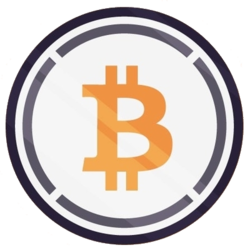

BTC/USDT
104916 (-216.64911135065%)
ETH/USDT
3537.18 (-14.049895071817%)
USDT/USDT
1 (0.00019038%)
SOL/USDT
159.7 (-3.490726346156%)BNB/USDT
971.91 (-6.5575775709832%)
XRP/USDT
2.43 (-0.034525930731997%)
DOGE/USDT
0.176167 (-0.0010872527541718%)
USDC/USDT
0.999707 (-9.5653064309698E-5%)
STETH/USDT
3532.02 (-16.926972776818%)
ADA/USDT
0.570592 (-0.0067046854249543%)
TRX/USDT
0.299011 (0.00157876%)
SHIB/USDT
9.9E-6 (8.302E-9%)
WBTC/USDT
104734 (-84.519744203557%)
AVAX/USDT
17.58 (-0.13263886635824%)
TON/USDT
2.08 (0.00460724%)
WSTETH/USDT
4300.08 (-29.703432306545%)
SUI/USDT
2.07 (-0.018620459091321%)
WETH/USDT
3537.71 (-17.394283824649%)
LINK/USDT
15.87 (-0.18458662890548%)
BCH/USDT
520.05 (3.92%)
DOT/USDT
3.13 (-0.029941225499402%)
PEPE/USDT
5.99E-6 (-1.3488573441E-8%)
LEO/USDT
9.21 (-0.013337835891924%)
XLM/USDT
0.29052 (-0.00073469737364995%)
NEAR/USDT
2.65 (-0.0056822426955767%)
LTC/USDT
102.34 (-0.057683720317712%)
APT/USDT
3.19 (0.01907563%)
WEETH/USDT
3817.26 (-22.20956136856%)
USDS/USDT
0.999755 (7.269E-5%)
UNI/USDT
8.6 (0.068259%)
CRO/USDT
0.129696 (-0.0022448143217884%)
HBAR/USDT
0.184511 (-0.0020675066340383%)
ICP/USDT
6.43 (0.091106%)
RENDER/USDT
2.56 (0.136539%)KAS/USDT
0.050068 (-0.0014303632455323%)
ETC/USDT
16.01 (0.04720882%)
BONK/USDT
1.917E-5 (-1.21289055448E-7%)
USDE/USDT
1 (0.00129652%)
POL/USDT
0.177068 (-0.0010912097112021%)
WBT/USDT
55.18 (0.305243%)
DAI/USDT
0.999807 (2.527E-5%)
TAO/USDT
375.33 (1.14%)
OM/USDT
7.51 (-0.060446131592184%)
FET/USDT
0.529319 (-0.021696199474593%)
WIF/USDT
0.993064 (-0.061851330555541%)
XMR/USDT
388.33 (13.07%)
STX/USDT
0.937492 (0.058387%)
ARB/USDT
0.279018 (-0.012600291545838%)
OKB/USDT
126.38 (0.998087%)
VET/USDT
0.01727704 (6.614E-5%)
FIL/USDT
2.34 (-0.045029317299895%)
ATOM/USDT
3.05 (0.0359937%)
MNT/USDT
1.29 (0.04936476%)
FLOKI/USDT
0.0001008 (9.59E-6%)
AAVE/USDT
216.03 (-1.526617062694%)FDUSD/USDT
1 (-0.0015965344535027%)
INJ/USDT
15.76 (0.592793%)
GRT/USDT
0.138062 (0.00443669%)
IMX/USDT
0.762036 (0.059707%)
TIA/USDT
3.52 (0.367034%)
OP/USDT
1.16 (0.01957558%)
SEI/USDT
0.195821 (0.00295475%)
BGB/USDT
4.15 (0.02736646%)
WETH/USDT
3536.72 (-17.38965988166%)
FTM/USDT
0.658474 (-0.046529894632006%)
ALGO/USDT
0.183188 (0.00275242%)
RUNE/USDT
4.04 (0.517227%)
THETA/USDT
1.32 (0.050254%)
BRETT/USDT
0.163348 (-0.0095760106448854%)
RETH/USDT
4061.35 (-20.901042533322%)
RAY/USDT
4.52 (0.217728%)
PYTH/USDT
0.262686 (0.057057%)
CBBTC/USDT
104680 (-448.8243447577%)
POPCAT/USDT
1.52 (-0.31758447100034%)
SOLVBTC/USDT
97715 (2350.62%)
METH/USDT
2913.13 (34.98%)
ENA/USDT
0.329327 (0.0002519%)
PNUT/USDT
1.47 (-0.26170915119663%)
JUP/USDT
0.345412 (-0.004374146608992%)
WLD/USDT
0.81202 (0.01300701%)
EZETH/USDT
3699.45 (-243.16204529738%)
ONDO/USDT
0.672545 (0.00137428%)
MKR/USDT
1456.29 (301.61%)
BSV/USDT
67.19 (-2.4319382246777%)
KCS/USDT
13.18 (-0.033119553308948%)
QNT/USDT
84.18 (-2.0840485522767%)
MSOL/USDT
239.93 (-6.9072552141168%)
GT/USDT
11.72 (-0.17847683719924%)
AR/USDT
17.31 (-0.92557641543888%)
BEAM/USDT
0.02147898 (-0.0033151514127286%)
GALA/USDT
0.02281039 (0.00056766%)
XTZ/USDT
0.868125 (0.02996743%)
LBTC/USDT
105046 (114.94%)
FLOW/USDT
0.67178 (-0.02844094176447%)
BTT/USDT
1.07E-6 (-4.6069927814E-8%)FLR/USDT
0.01580514 (0.00012882%)FTN/USDT
3.96 (-0.00091864315376267%)
MATIC/USDT
0.433245 (-1.0570453775671E-5%)
LDO/USDT
1.77 (0.053176%)
HNT/USDT
5.63 (-0.061142966269363%)
CTB/USDT
23.78 (-0.10940947688621%)
HYPE/USDT
40.23 (0.04170887%)
VIRTUAL/USDT
1.57 (0.062524%)
TKX/USDT
37.01 (1.83%)
S/USDT
0.858036 (0.13089%)
PENGU/USDT
0.01870318 (-0.0015768167383256%)
MOVE/USDT
0.484266 (-0.010264422844265%)RSETH/USDT
3734.21 (-17.891357963844%)XDC/USDT
0.08997 (-0.00021135136002697%)
USD0/USDT
0.998288 (-0.00014167521337316%)
BNSOL/USDT
173.02 (-3.223244890105%)
JASMY/USDT
0.02176722 (0.00045533%)
SAND/USDT
0.384977 (-0.0075551784161459%)
AI16Z/USDT
1.36 (-0.24597297437341%)
NEXO/USDT
1.19 (0.01115365%)
IOTA/USDT
0.397487 (-0.0030677550351057%)
KAIA/USDT
0.190915 (0.00286011%)
SUSDS/USDT
1.074 (-0.00099746716165217%)EOS/USDT
0.647748 (0.02317585%)
FARTCOIN/USDT
1.22 (0.286473%)
TRUMP/USDT
7.86 (-0.57019399437883%)
KPK/USDT
1.11 (0.02302905%)
SPX/USDT
1.59 (0.090913%)
SOS/USDT
1.2 (-0.310659339207%)
DEXE/USDT
19.02 (0.633089%)
XCN/USDT
0.02798534 (-1.3189795656711E-5%)
ENS/USDT
25.86 (-1.2146260053877%)
SOLVBTC.BBN/USDT
96769 (2166.8%)
JTO/USDT
3.28 (0.27036%)
MURA/USDT
3.89 (1.42%)
TEL/USDT
0.01118434 (-9.2644166405201E-5%)
UGOLD/USDT
3040.19 (0.581943%)
YAYSTONE/USDT
2704.03 (-45.000872904416%)
IP/USDT
3.87 (0.04203392%)WBETH/USDT
3828.85 (-13.526051706869%)
FIGR_HELOC/USDT
1.037 (0.0059126%)
BSC-USD/USDT
1 (0.00047877%)
USDT0/USDT
1 (0.00027931%)
SUSDE/USDT
1.2 (0.00032538%)
WLFI/USDT
0.15803 (0.00359643%)
M/USDT
2.44 (0.056568%)
JITOSOL/USDT
198.06 (-4.6750083457304%)
MYX/USDT
8.92 (-6.5947100140791%)
ASTER/USDT
1.17 (0.099354%)
USD1/USDT
0.999398 (0.00037043%)
BUIDL/USDT
1 (0%)
PYUSD/USDT
0.999311 (-0.00050954645056955%)
JLP/USDT
5.08 (-0.050803244202774%)
PI/USDT
0.22783 (-0.0024380241893524%)
USDF/USDT
0.998 (-0.00089566339789404%)
XPL/USDT
0.862811 (-0.12388593634619%)
PUMP/USDT
0.00438015 (2.638E-5%)
USDTB/USDT
0.999473 (0.00105676%)
KHYPE/USDT
40.36 (0.00885748%)HASH/USDT
0.03097547 (0.00062583%)
BFUSD/USDT
0.999879 (0.00015792%)
OSETH/USDT
3766.4 (228.3%)
SKY/USDT
0.059274 (0.00430932%)
LSETH/USDT
3903.65 (247.99%)
XAUT/USDT
4113.92 (-11.650439683031%)
ZEC/USDT
480.68 (-4.0025362583262%)
C1USD/USDT
1 (-0.00012159786400057%)
2Z/USDT
0.470143 (-0.0078749328066172%)
WBNB/USDT
972.01 (-6.92846281834%)
CAKE/USDT
3.47 (0.470734%)
HTX/USDT
1.82E-6 (7.808E-9%)
COAI/USDT
6.26 (-2.7907132679178%)
PAXG/USDT
4113.51 (-15.536448338777%)
SYRUPUSDC/USDT
1.14 (0.0004245%)
SOL/USDT
159.63 (-3.6501206654038%)
SYRUPUSDT/USDT
1.1 (-0.00024643068425045%)
USDC/USDT
1 (-9.7025391592176E-5%)
DASH/USDT
112.83 (-4.8299760255736%)
FBTC/USDT
104957 (-33.454603154256%)
AIA/USDT
15.61 (12.94%)
